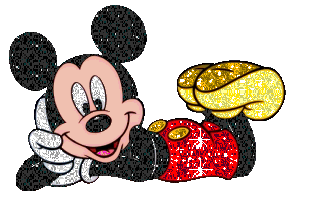
Croissant
Ham and cheese croissant
A croissant (IPA: [kʁwasɑ̃] listen (help·info), anglicised variously as IPA: /krəˈsɑːnt/, /kwɑːˈsɑːn/, etc.) is a buttery flaky pastry, named for its distinctive crescent shape. It is also sometimes called a crescent[1] or crescent roll:
"On a small table at her side a tray had been left, with the remains of dejeuner; a jug stained brown with streaks of coffee; a crumbled crescent roll..."[2]
Crescent-shaped breads have been made since the Middle Ages[citation needed], and crescent-shaped cakes (imitating the often-worshiped Moon) possibly since classical times:
Hebrew women, in the time of Jeremiah, made in honor of the pagan goddess Astarte (queen of heaven, queen of the moon) cakes, probably in the form of a crescent. [3]
Croissants are made of a leavened variant of puff pastry by layering yeast dough with butter and rolling and folding a few times in succession, then rolling. Making croissants by hand requires skill and patience; a batch of croissants can take several days to complete. However, the development of factory-made, frozen, pre-formed but unbaked dough has made them into a fast food which can be freshly baked by unskilled labor. Indeed, the croissanterie was explicitly a French response to American-style fast
"On a small table at her side a tray had been left, with the remains of dejeuner; a jug stained brown with streaks of coffee; a crumbled crescent roll..."[2]
Crescent-shaped breads have been made since the Middle Ages[citation needed], and crescent-shaped cakes (imitating the often-worshiped Moon) possibly since classical times:
Hebrew women, in the time of Jeremiah, made in honor of the pagan goddess Astarte (queen of heaven, queen of the moon) cakes, probably in the form of a crescent. [3]
Croissants are made of a leavened variant of puff pastry by layering yeast dough with butter and rolling and folding a few times in succession, then rolling. Making croissants by hand requires skill and patience; a batch of croissants can take several days to complete. However, the development of factory-made, frozen, pre-formed but unbaked dough has made them into a fast food which can be freshly baked by unskilled labor. Indeed, the croissanterie was explicitly a French response to American-style fast
food. This innovation, along with the croissant's versatility and distinctive shape, has made it the best-known type of French pastry in much of the world. In many parts of the United States, for example, the croissant
(introduced at the fast food chains Arby's in the United States and Tim Hortons in Canada in 1983) has come to rival the long-time favorite doughnuts[citation needed].
Origin

Fanciful stories of how the bread was created are modern culinary legends. These include tales that it was invented in Poland to celebrate the defeat of a Muslim invasion at the decisive Battle of Tours by the Franks in 732, with the shape representing the Islamic crescent; that it was invented in Vienna in 1683 to celebrate the defeat of the Turkish siege of the city (which was victoriously lead by Jan Sobieski of Poland), as a reference to the crescents on the Turkish flags, when bakers staying up all night heard the tunneling operation and gave the alarm; tales linking croissants with the kifli and the siege of Buda in 1686; and those detailing Marie Antoinette's hankering after a Viennese specialty.
Several points argue against the connection to the Turkish invasion or to Marie-Antoinette: saving the city from the Turks would have been a major event, yet the incident seems to be only referenced by food writers (writing well after the event), and Marie-Antoinette - a closely watched monarch, with a great influence on fashion - could hardly have introduced a unique foodstuff without writers of the period having commented on it. Those who claim a connection never quote any such contemporary source; nor does an aristocratic writer, writing in 1799, mention the pastry in a long and extensive list of breakfast foods. [4]
Alan Davidson, editor of the Oxford Companion to Food states that no printed recipe for the present-day croissant appears in any French recipe book before the early 20th century; the earliest French reference to a croissant he found was among the "fantasy or luxury breads" in Payen's Des substances alimentaires, 1853.
This suggests that the croissant was just becoming known at mid-century (though the puff pastry used to make it was already mentioned in the late 17th century, when La Varenne's "Le cuisinier françois" gave a recipe for it in the 1680 - and possibly earlier - editions.) By 1869, it was well-established enough to be mentioned as a breakfast staple [5] and in 1872, Charles Dickens wrote (in his periodical "All the Year Round") of:
the workman's pain de ménage and the soldier's pain de munition, to the dainty croissant on the boudoir table [6]
However, it is possible - if not thus far documented - that there was a Viennese connection to the appearance of the croissant in France. Croissants today are one of a number of puff-pastry based items known as Viennoiserie - "Vienna-style items". The idea that Viennese-style rolls were finer seems to have started with a Boulangerie Viennoise - "Viennese breadstuff bakery" - that opened in Paris in the first half of the nineteenth century: "This same M. Zank...founded around 1830, in Paris, the famous Boulangerie viennoise" [7]. Several sources refer to the superiority of this bakery's products: "Paris is of exquisite delicacy; and, in particular, the succulent products of the Boulangerie Viennoise"[8]; "which seemed to us as fine as if it came from the Viennese bakery on the rue de Richelieu"[9]. The following mention was written well after the croissant was common in France, and already mentions one common myth: "The croissant, which appeared in Paris for the first time at the boulangerie viennoise of the rue Montmartre, comes, effectively, from Vienna. It dates, I was told in that city, from the invasion of the Austrian capital by the Turks in 1683." [10]
Several points argue against the connection to the Turkish invasion or to Marie-Antoinette: saving the city from the Turks would have been a major event, yet the incident seems to be only referenced by food writers (writing well after the event), and Marie-Antoinette - a closely watched monarch, with a great influence on fashion - could hardly have introduced a unique foodstuff without writers of the period having commented on it. Those who claim a connection never quote any such contemporary source; nor does an aristocratic writer, writing in 1799, mention the pastry in a long and extensive list of breakfast foods. [4]
Alan Davidson, editor of the Oxford Companion to Food states that no printed recipe for the present-day croissant appears in any French recipe book before the early 20th century; the earliest French reference to a croissant he found was among the "fantasy or luxury breads" in Payen's Des substances alimentaires, 1853.
This suggests that the croissant was just becoming known at mid-century (though the puff pastry used to make it was already mentioned in the late 17th century, when La Varenne's "Le cuisinier françois" gave a recipe for it in the 1680 - and possibly earlier - editions.) By 1869, it was well-established enough to be mentioned as a breakfast staple [5] and in 1872, Charles Dickens wrote (in his periodical "All the Year Round") of:
the workman's pain de ménage and the soldier's pain de munition, to the dainty croissant on the boudoir table [6]
However, it is possible - if not thus far documented - that there was a Viennese connection to the appearance of the croissant in France. Croissants today are one of a number of puff-pastry based items known as Viennoiserie - "Vienna-style items". The idea that Viennese-style rolls were finer seems to have started with a Boulangerie Viennoise - "Viennese breadstuff bakery" - that opened in Paris in the first half of the nineteenth century: "This same M. Zank...founded around 1830, in Paris, the famous Boulangerie viennoise" [7]. Several sources refer to the superiority of this bakery's products: "Paris is of exquisite delicacy; and, in particular, the succulent products of the Boulangerie Viennoise"[8]; "which seemed to us as fine as if it came from the Viennese bakery on the rue de Richelieu"[9]. The following mention was written well after the croissant was common in France, and already mentions one common myth: "The croissant, which appeared in Paris for the first time at the boulangerie viennoise of the rue Montmartre, comes, effectively, from Vienna. It dates, I was told in that city, from the invasion of the Austrian capital by the Turks in 1683." [10]
Variants
Croissant pastry can also be wrapped around any praline, almond paste or chocolate before it is baked (in the latter case, it becomes like pain au chocolat, which has a different, non-crescent, shape), or sliced to admit sweet or savoury fillings. In France, croissants are generally sold without filling and eaten without added butter, but sometimes with almond filling. In the United States, sweet fillings or toppings are common, and warm croissants may be filled with ham and cheese or feta cheese and spinach. In the Levant, croissants are sold plain or filled with chocolate, cheese, almonds, or zaatar. In Germany, croissants are sometimes filled with Nutella or persipan. In Switzerland the croissant is typically called a Gipfeli which typically has a crisper crust and is less buttery than the French style croissant. In Argentina and other Latin American countries, croissants are commonly served alongside coffee as a breakfast or merienda. These croissants are referred to as medialunas ("half moons") and are typically coated with a sweet glaze ("de manteca", made with butter). Another Argentine variant is a medialuna "de grasa" (of grease), which is not sweet.
Spread of the Croissant
The croissant was not common place in the UK, although available in specialty places, it was only in the late 1980s that supermarkets started stocking them and then in the late 1990s with the growth of cafe culture did the croissant spread.
Croissants are also seen in former French colonies such as Morocco.









